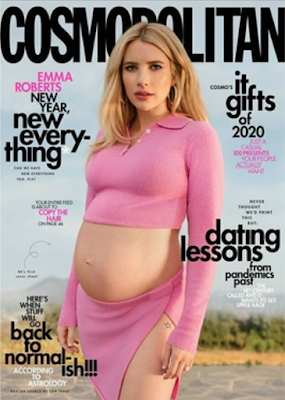1887 -On March 4, a 23-year-old William Randolph Hearst places his name on the masthead of the San Francisco Examiner as "Proprietor" for the first time, marking the beginning of Hearst Corporation.
1896- With William Randolph Hearst’s encouragement, Richard Outcault develops “The Yellow Kid,” transforming a simple gag panel into the first true example of the comic strip. “The Yellow Kid” leads the charge in Hearst’s trailblazing American Humorist comic supplement.
1897 -Hearst introduces “The Katzenjammer Kids” in the New York Journal. King Features still distributes the strip, making it the longest-running newspaper comic in history.
1900 -The Good Housekeeping Institute, a precursor to the FDA, is founded 15 years after its namesake magazine to improve the lives of consumers and their families through education and product evaluation.
1912 -Hearst’s New York Journal introduces the first full page of weekday daily comics.
1913 -The first Hearst newsreel is shown, leading to the creation of Hearst Metrotone News.
1915 -Hearst’s International Film Service is formed. Among the pioneer animation studios, the company made movie stars out of characters from Hearst newspaper comic strips, including “Bringing Up Father,” “Happy Hooligan,” “Maud the Mule,” “Krazy Kat” and more.
1930 -King Features launches “Blondie,” which is one of the most widely syndicated comic strips in the world today.
1933- Harper’s BAZAAR is one of the first fashion magazines to do a shoot on location and show a model in motion.
1940- Harper’s BAZAAR’s Editor-in-Chief Carmel Snow famously features a photograph on the cover—until then, covers featured mainly art and illustrations.
1952 -WBAL-TV Baltimore is one of the first stations to broadcast in color.
1955- Hearst Newspapers arranges the first cultural exchange between the United States and Russia, including interviews with top Soviet leaders that led to a Pulitzer Prize.
1965 -In February, Harper’s BAZAAR becomes the first women’s fashion magazine to feature a man—actor Steve McQueen—on the cover.
1978 -Hearst launches Country Living as an annual. It becomes a monthly in 1982.
1979- Hearst acquires the Edwardsville Intelligencer, Huron Daily Tribune, Midland Daily News, Midland Reporter-Telegram and Plainview Daily Herald.
1980- Hearst acquires First Databank.
1981- Hearst is a founding partner, with ABC, in the predecessors of cable networks A&E and Lifetime.
1986- Hearst acquires Boston’s WCVB-TV- Esquire becomes a Hearst publication.
1987 -Houston Chronicle is purchased by Hearst.
1990 -Hearst acquires a 20 percent interest in ESPN.
1993 -Hearst adds the San Antonio Express-News to its newspapers group.
1994 -Hearst and France’s Marie Claire Album introduce the U.S. edition of Marie Claire.
2000 -O, The Oprah Magazine, a venture with Oprah Winfrey’s Harpo Entertainment Group, is published. It is regarded as one of the most successful magazine startups in industry history.
Hearst is the first large television station group to commit to a minimum amount of daily candidate discourse-focused coverage of election campaigns. The pledge becomes a cornerstone of the company's "Commitment" effort that continues today.
2001 -Hearst is the first company to commit to a major building project in New York City after 9/11: Hearst Tower. The building is architect Lord Norman Foster’s first skyscraper in the U.S.
2002- ESPN reaches agreement for multimedia NBA coverage, becoming the first network to televise all four major professional sports—NFL, NHL, MLB, NBA.
2004 -Hearst acquires Zynx Health Incorporated, the leading supplier of evidence-based medicine content to more than 500 hospitals across the United States.
2005 -Hearst, American Land Conservancy, California Rangeland Trust and the State of California form one of the largest conservation easements in history (82,000 acres) in San Simeon, California.
ESPN is one of the first networks in cable television history to pass the 90 million subscriber mark in the U.S.
2007 -Hearst is the first to launch local HD news programming in Sacramento, Boston and Kansas City.
2008 -King Features launches Comics Kingdom, a first-of-its-kind digital comics platform.
The October issue of Esquire features a flexible electronic "paper" cover that allows words and images to scroll across it—a first for magazines—in celebration of the magazine’s 75th anniversary.
2009 -Seattle Post-Intelligencer is the first major daily newspaper to transition to an all-digital model.
Good Housekeeping launches the Green Good Housekeeping Seal, an environmental extension of the original Seal. At a time when no other company had provided a universal definition of "green,” the Green Good Housekeeping Seal created standards to evaluate products based on their measurable environmental impact.
2010 -Hearst is the first magazine publisher to make all of its titles available to read on every major tablet device.
2011 -Hearst acquires nearly 100 magazines in 14 countries from Lagardère, making it one of the largest monthly magazine publishers in the world and the largest monthly publisher in the U.S.
The WatchESPN app for iPad, iPhone and iPod launches, allowing mobile access to ESPN, ESPN2, ESPNU and ESPN3.com—the first live streaming cable channels available in the U.S. on mobile devices.
2012 -Hearst Tower achieves Platinum LEED certification, the highest possible rating. It also becomes the first commercial building in New York to achieve both LEED Gold for New Construction and LEED Platinum for Existing Buildings.
2014
Hearst announces the formation of Hearst Health, a brand that encompasses the company’s healthcare information businesses and health ventures.
2016 -Hearst acquires CAMP Systems International Inc. from private equity firm GTCR. CAMP is a leading global provider of software-as-a-service (SaaS) for business aviation, serving more than 19,000 aircraft, 30,000 engines and 1,300 maintenance facilities globally.
2018 -Hearst completes transaction with Rodale, Inc. to acquire the company’s global health and wellness brands. The acquired brands publish 62 print editions and 57 websites in 31 countries.
Hearst takes full ownership of Fitch Ratings Inc., one of the “Big Three” credit rating agencies, after originally acquiring a 20 percent stake in 2006









